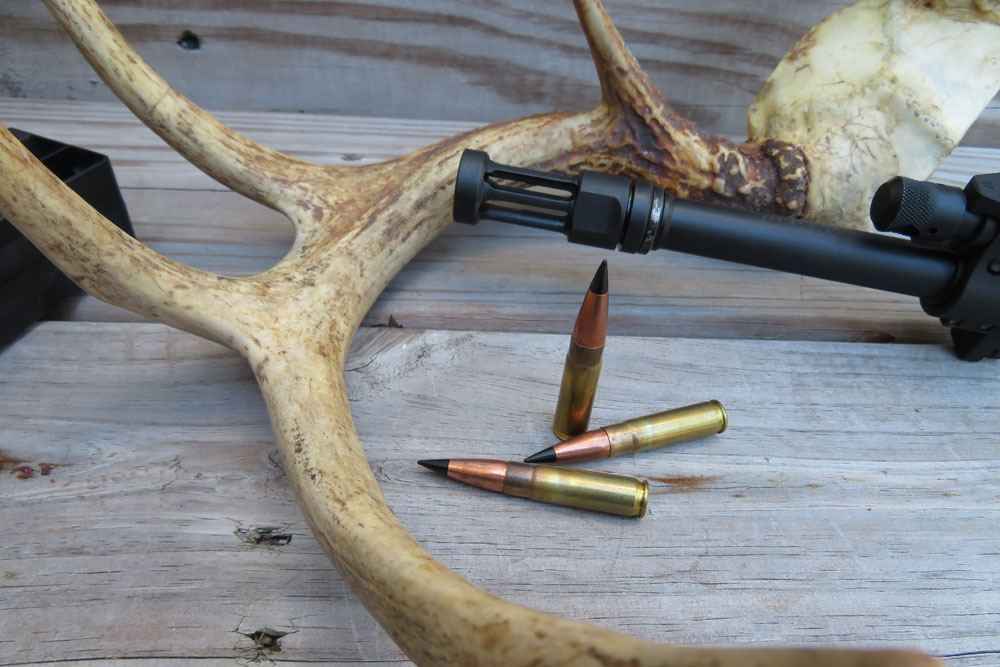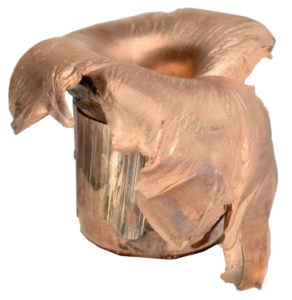
“Believe it or not, the 300 BLK has all the attributes to make it really well suited for hunting white-tailed deer.
Does the 300 BLK have what it takes to be a great deer cartridge?
- Like many of the great deer rounds, the 300 BLK is a .30-caliber cartridge.
- Supersonic and subsonic loads are available; supersonic rounds are better for hunting.
- Ballistically, it’s similar to the .30-30 and 7.62x39mm, both capable on deer.
- The 300 BLK is surprisingly accurate and deadly, if ranges are kept within reason.
When the 300 BLK became a made cartridge by Advanced Armament Corp (AAC) and Remington after being blessed by SAAMI in 2011, there was a lot noise and chatter about the launch of the new cartridge for the AR-15 platform. I didn’t get excited.
Not that the 300 AAC BLK was actually new; by then, it was less of a wildcat cartridge than the 300 Whisper. And you can see that was part of my issue. I was very confused about what the 300 AAC BLK was. Was it the 300 AAC Blackout, or was it the 300 Whisper? Maybe the 7.62x35mm? Isn’t it the 300 BLK?
The short answer is that they are basically all the same cartridge with different names. The 300 Whisper is considered the progenitor to the  cartridge. Most manufacturers of the cartridge have settled on calling it the 300 BLK. The fact the cartridge is offered in supersonic and subsonic loads also confused some hunters. What’s better for hunting?
cartridge. Most manufacturers of the cartridge have settled on calling it the 300 BLK. The fact the cartridge is offered in supersonic and subsonic loads also confused some hunters. What’s better for hunting?
The Magic Number
What started my curiosity with 300 BLK was the .30-caliber bullet. When I hear .30-caliber bullet, I start thinking in terms of deer, and howthe cartridge and bullet combination will work for hunting deer. We deer hunters really like calibers that use .30-caliber bullets — .30-30 Win., .300 Savage, .30-06, .308 Win., .300 Win. Mag. — they all perform well in the field. Simply stated: We have peace of mind with .30-caliber bullets.
I learned to hunt white-tailed deer by silently cocking back the hammer of a lever-action rifle and knowing the limitation of the .30-30 Winchester cartridge. Silence doesn’t spook deer, and a correctly placed shot leads to less tracking and more dragging. That caliber also helped me better understand trajectory in relation to bullet weight and velocity. Call it home-schooled ballistics.
While the AR-15 platform is about as far away from a Marlin or Winchester lever gun as you can get, I appreciate the AR-15 platform as a hunting rifle. That appreciation did not come quickly nor easily because the 5.56 NATO/.223 Rem. caliber, which is the caliber typically associated with the AR-15, is effective on wood chucks, ground hogs and coyotes — not game animal taller than knee high.
After using the 300 BLK at the range, I started to like it even if there were not that many ammunition manufacturers producing 300 BLK ammo at the time. Now that more factories are producing a variety of loads — both supersonic and subsonic — I was all in. At the range and through AR-15 platforms, I could easily shoot groups with match ammo that were sub-MOA. Recoil was mild. Muzzle blast tolerable. That’s sweet.
 Quirky Cartridge, Surprising Accuracy
Quirky Cartridge, Surprising Accuracy
The 300 BLK cartridge itself is odd-looking, like too much bullet was stuffed into too little a case. The reason for this is the original 300 Whisper wildcat cartridge was designed to use lightweight bullets at supersonic velocities and heavier bullets at subsonic velocities. The 300 BLK was designed to provide ballistics similar to the Soviet 7.62x39mm cartridge in the AR-15 platform, as well as perform at super and subsonic velocities. Even though the round was designed for combat and defensive scenarios, and not specifically for hunting medium-size game, it offers excellent performance if kept within its range of effectiveness.
It’s also an accurate round. When I tested a Windham Weaponry RMCS-4 rifle in 300 BLK, my smallest group measured 0.28 inch with Sig Elite 125-grain Sierra Match King bullets. Not a hunting bullet by any means, but it’s an excellent example of the accuracy you can expect from the 300 BLK.
Available bullets range in weight from 78 to 240 grains depending on the application. Lightweight 78-grain bullets are designed for close-quarters defense, while at the opposite end of the spectrum are 220-grain bullets loaded for subsonic velocities and designed for use with a suppressor. These are good for special ops work and hunting.
All 300 BLK bullets start out with decent velocity: 110-grain bullets crank out of the muzzle at 2,350 fps. Because the cartridge uses a large bullet and has limited case space for powder, the bullets tend to shed velocity more quickly than other .30-caliber cartridges.
For hunting, I stick with supersonic rounds loaded with 110- to 130-grain bullets such as Hornady’s Custom loaded with a 110-grain V-Max bullet. Out of a DRD Tactical CDR-15, I easily grouped three shots on average at 1.1 inches at 100 yards. Better yet, the DRD liked Barnes VOR-TX ammo loaded with 110-grain TAC-TX bullets. The DRD spit these into groups that measured 0.8 inch.
My Ruger SR-556 Takedown particularly likes the Barnes load. My best group with that ammo measured 0.41 inches. And I like the performance with these bullets. Other good choices I’ve used include Hornady’s Full Boar 110-grain GMX bullets and Federal’s Fusion ammo loaded with a 150-grain Fusion Soft Point. Sig’s Elite Performance 120-grain solid copper expanding bullets are also a good choice. LeHigh Controlled Chaos bullets were designed for maximum expansion with minimal pass-through and are loaded by LeHigh Defense as well as Underwood and Gorilla ammo in weights of 115 and 110 grains, respectively. ……”
Source: Is The 300 BLK The Next Classic Deer Cartridge? | Gun Digest
